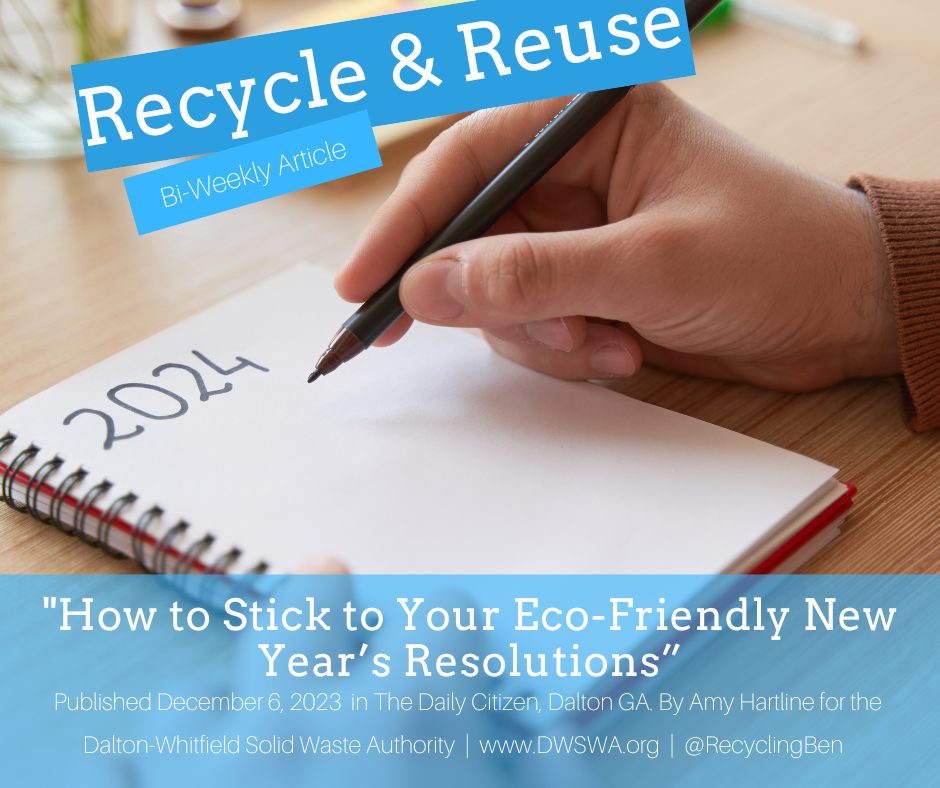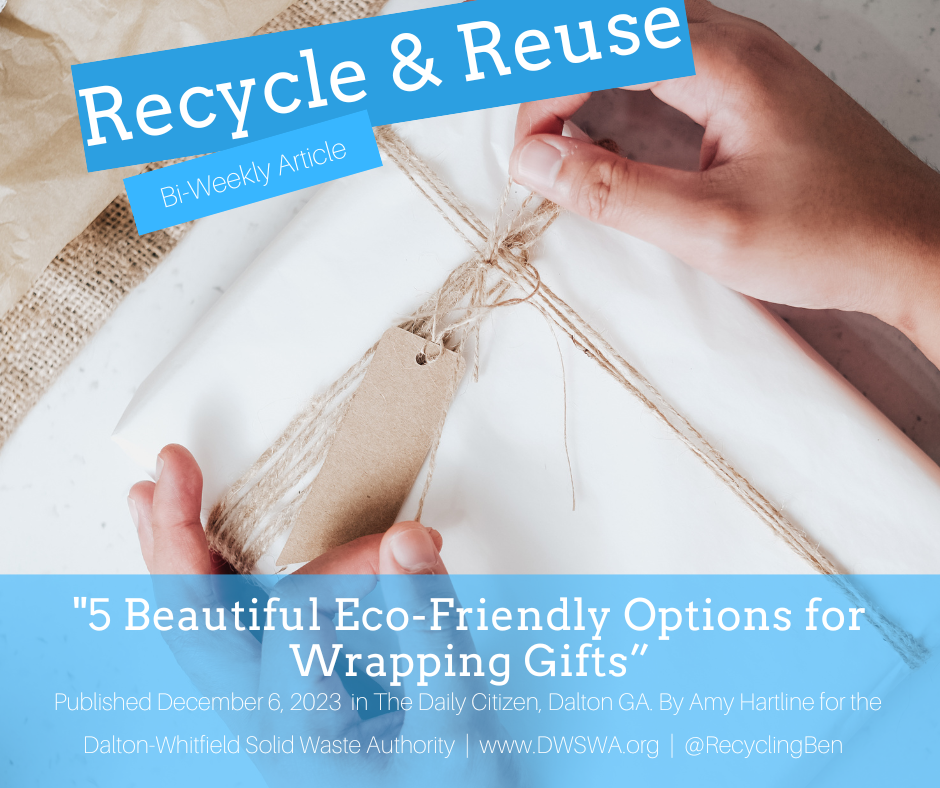More Paper Recycled Than Landfilled
/(Published on Wednesday, March 2, 2016, in The Daily Citizen, Dalton, GA.)
Recycle & Reuse: More Paper Recycled Than Landfilled
Your recycling efforts can help reach the national goal of recycling 70 percent of paper by 2020. Paper that is clean and dry can be recycled with other mixed paper in our community.
According to the American Forest & Paper Association (AF&PA), the U.S. paper recovery rate rose to 65.4 percent in 2014, nearly double the rate of paper recovery in 1990 when the AF&PA begin tracking the statistics. Nearly three times more paper is recycled than sent to landfills making paper recycling an environmental success story. The goal for 2020 is to exceed a 70 percent recovery rate as established in their sustainability initiative Better Practices, Better Planet 2020.
Recycling takes a product at the end of its useful life and uses all or part of it to make a new product. Approximately 80 percent of all U.S. paper mills use some recycled paper to make everything from paperboard boxes to package food, tissue products, office paper, and newspaper. According to the Georgia Recycling Coalition half of the paper mills in the state rely exclusively on recycled paper to make their products. Those that use recycled paper instead of virgin timbers to make new paper save about 40 percent of the energy required in the manufacturing process.
Every ton of paper recovered for recycling saves 3.3 cubic yards of landfill space. This results in landfills lasting longer and reducing the need to find land to build new ones. The landfill in Whitfield County is estimated to have thirty years of space left. This can be extended if we all recycle paper products on a consistent basis. According to the Environmental Protection Agency (EPA) by weight, more paper is recovered for recycling from municipal solid waste streams than glass, plastic, steel, and aluminum combined.
Your local contributions will help reach the goal of 70 percent paper recycling by 2020. While you may already be recycling at the curb or at a drop-off site you can help improve the quantity and quality of paper being collected for recycling. Before recycling be sure that the item is dry, empty, clear of food residue, garbage or other contaminants. Remove non-paper inserts, plastic wrap, and additional packaging materials. Break down all boxes, no matter the size, to save space. Place shredded paper in a semi-transparent or clear plastic bag that is securely tied to prevent litter.
The paper that can be recycled includes white and colored paper from home, school, or the office such as writing paper, office folders, notebooks and stationary. Cereal and dry food boxes, shoe boxes, and laundry detergent boxes that are empty are also accepted. Mail and envelopes such as postcards, greeting cards, coupon packets, junk mail, magazines, and catalogs free from plastic wrap and adhesives are recyclable too. Paper shopping bags from retail stores, boxes for over the counter medicine, cosmetics, or perfume, and food containers that are clean should be emptied before going in the recycling bins. Books of all sizes can also be recycled, even telephone books.
After the paper is dropped off at a recycling drop-off site it’s transported to a recycling center where the paper checked and remaining contaminates are removed. A bale is made and transported to a paper mill where the recycling and papermaking process begins. The recovered paper is shredded and mixed with water to make a pulp. Dyes, coatings, and other additives are mixed into the pulp to refine it. The mixture is then pumped onto a large screen that drains the water leaving behind a paper sheet.
Giant rollers squeeze out more water until it forms a smooth uniform layer of new paper. Heated rollers evaporate the remaining water to dry the paper before it’s wound into large rolls. According to the AF&PA, the new rolls can be up to 30 feet wide and weigh close to 25 tons. The paper rolls are then sent out to other manufactured to use in making their new products. These could be newspapers, books, paperboard boxes, office paper, and more.
































